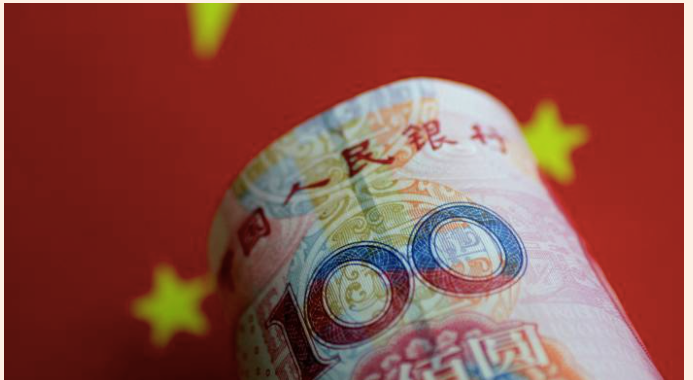
Beijing reluctant to rein in borrowing as it pursues growth.
China’s economy will grow faster than expected over the next three years because of the government’s reluctance to rein in “dangerous” levels of debt, the International Monetary Fund warned on Tuesday.
In an annual review of the world’s second-largest economy, IMF staff said China’s annual economic growth would average 6.4 per cent in 2018-20, compared with a previous estimate of 6 per cent. The IMF is also predicting that the Chinese economy will expand 6.7 per cent this year, up from its earlier forecast of 6.2 per cent growth.
The Chinese government, which pledged to double the size of the economy between 2010 and 2020, has tolerated a rapid run-up in debt in order to meet its target. “The [Chinese] authorities will do what it takes to attain the 2020 GDP target,” the IMF said.
As a result, the IMF now expects China’s non-financial sector debt to exceed 290 per cent of GDP by 2022, compared with 235 per cent last year. The fund had previously estimated that debt levels would stabilise at 270 per cent of GDP over the next five years.
“International experience suggests that China’s current credit trajectory is dangerous with increasing risks of a disruptive adjustment,” the IMF said in the strongly worded report.
Higher debt levels, it added, would reduce Beijing’s “fiscal space” to react to any potential crisis in the interbank market or a “loss of confidence” in wealth management products, sales of which have unpinned the rapid expansion of China’s shadow banking sector.
Jin Zhongxia, China’s representative at the IMF, rejected the fund’s warnings. “The stronger performance [of the Chinese economy] since 2017 was not merely driven by policy stimulus but [is] rather a reflection of rebalancing and structural adjustment,” he said in Beijing’s official reply. “The [IMF] staff’s scenario of an abrupt slowdown of the Chinese economy . . . is highly unlikely.”
In the aftermath of the global financial crisis, Chinese authorities unleashed a lending spree that more than quadrupled total debt to $28tn at the end of 2016 .
In its report, the IMF noted that China’s “credit efficiency” had deteriorated sharply over the past decade, with ever larger amounts of money needed to generate the same amount of growth. “In 2008, new credit of about Rmb6.5tn was needed to raise nominal GDP by Rmb5tn,” the fund said. “In 2016 it took Rmb20tn in new credit.”
The IMF added that had the Chinese government not turned on the credit taps, average real GDP growth in the five years to 2016 would have averaged 5.3 per cent rather than 7.3 per cent.
The fund was also critical of state-owned enterprise reform, noting that large swaths of the economy remain off-limits to private sector companies that nonetheless account for more than 80 per cent of employment and 50 per cent of tax revenues.
“Private sector participation in SOEs remain limited [and] political influence has been institutionalised,” the IMF said, referring to the growing clout of Communist party committees in most SOEs.
In response, Chinese authorities argued that “institutionalising the Communist party’s leadership within SOEs would help increase [their] efficiency”.
 Follow @jessethan for more articles like this!
Follow @jessethan for more articles like this!
Hi! I am a robot. I just upvoted you! I found similar content that readers might be interested in:
https://www.ft.com/content/4ca05a5a-81a3-11e7-a4ce-15b2513cb3ff